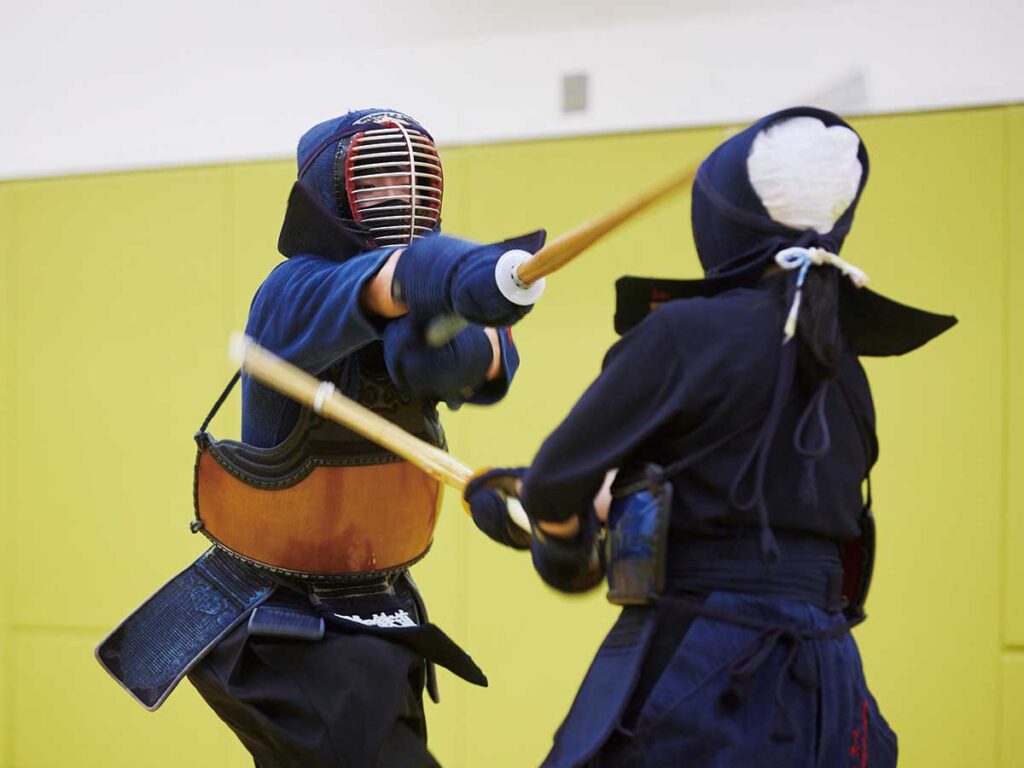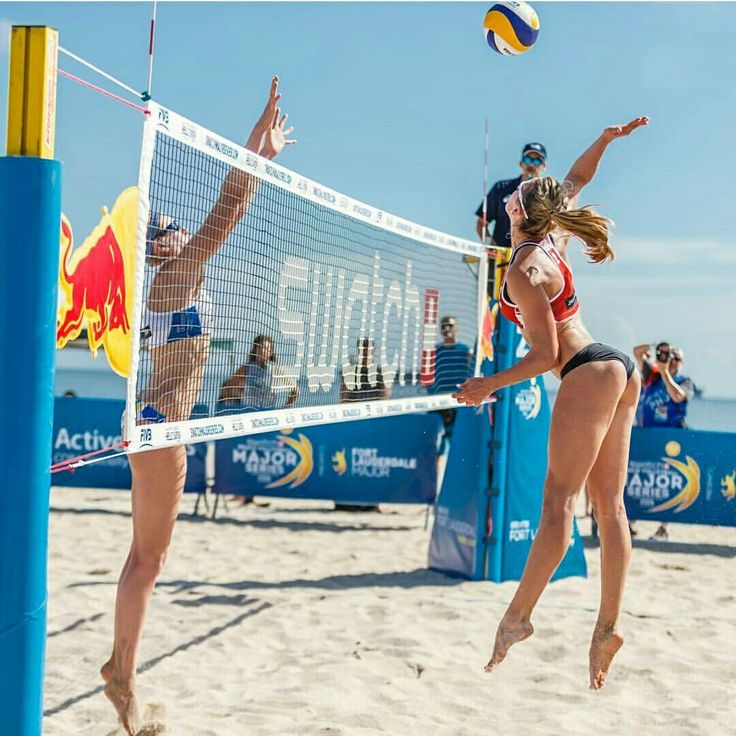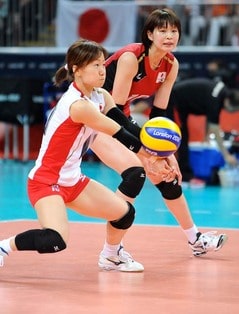![A thorough explanation of the rules of beach volleyball! How is it different from indoor volleyball? [From beginner to advanced]](https://planotatico.com/wp-content/uploads/2024/03/img_f30fa028b697a80811bb685537898f2998980-min.jpg)
Beach volleyball is a dynamic sport enjoyed on the sand and in the sun.
Its simplicity and exhilaration are one of the reasons why it continues to fascinate many people around the world.
However, the true appeal of beach volleyball is deeply rooted in its rules and style of play.
Compared to indoor volleyball, it is characterized by more freedom and strong strategic elements.
In this article, we will thoroughly explain the basic rules of beach volleyball, its appeal, and the differences from indoor volleyball so that everyone from beginners to advanced players can enjoy it.
Welcome to the world of beach volleyball! Here, you can fully enjoy its charm and take the first step to experience it for yourself.
目次
- 1 Introduction: What is beach volleyball? About its charm
- 2 Basic rules of beach volleyball
- 3 Differences in rules between beach volleyball and indoor volleyball
- 4 Unique rules and tactics for beach volleyball
- 5 Basic equipment to start playing beach volleyball
- 6 Summary: Have fun exercising with beach volleyball
Introduction: What is beach volleyball? About its charm
Beach volleyball is a variation of volleyball played by teams of two on a sandy court.
It is also recognized as an official Olympic sport, and is loved by people of all ages around the world.
The biggest appeal of this sport is the sense of freedom that comes with playing in the natural environment of a sandy beach, and the high level of strategy.
Furthermore, compared to indoor volleyball, the conditions players face constantly change, so flexibility and improvisation are required.
Basic information about beach volleyball
The court size for beach volleyball is 16m x 8m, which is smaller than indoor volleyball, and the height of the net is 2.43m for men and 2.24m for women.
The first team to score 21 points in a game wins, and in the case of a three-game match, only the final game is scored at 15 points.
The rules of beach volleyball are basically the same as indoor volleyball, but there are many unique elements, such as players holding hands to change courts.
The unique charm of beach volleyball
- Oneness with nature: Playing on the sand provides players with the feeling of being part of nature. The sun, the wind, and the feel of the sand create a special experience unlike any other sport.
- Highly strategic: Since only two players need to cover all plays, the ability to read the opponent’s strategy and instantly change your team’s strategy is required. This high level of strategy gives beach volleyball its depth.
- The importance of communication: Close communication with teammates is the key to success. Communicating not only with words, but also with your gaze and body movements will lead to a stronger sense of unity as a team.
- Improved physical performance: Playing on the sand requires more strength and balance than playing indoors. Therefore, by playing beach volleyball regularly, you can expect to improve your overall physical ability.
These unique features make beach volleyball a sport that can be enjoyed by both players and spectators.
In the next section, we will explain the basic rules of beach volleyball in detail.

Basic rules of beach volleyball
Beach volleyball is known for its simplicity and intense competition.
However, in order to enjoy this sport, it is first necessary to understand the basic rules.
Here we will explain the size of the beach volleyball court, how to score, and how the game is played.
coat size
Beach volleyball courts are rectangular, measuring 8 meters wide and 16 meters long.
This is smaller than an indoor volleyball court and requires more agile movement as players have more area to cover.
There is generally a free zone of at least 3 meters around the court.
Scoring method (rally point system)
Beach volleyball uses a rally point system, in which not only the serving team gets points, but the defending team also gets points if they win the rally.
The first team to score 21 points in a set (15 points in the final set) wins that set, but a win is not recognized unless there is a two-point difference.
How the match progresses
Beach volleyball matches are usually played in three-set matches.
The winner of the match will be determined when either team wins two sets first.
There is a short break between sets, and teams change sides of the court.
This break time is used to review strategies and recover physical strength.
serve
The serving team hits the ball from the back of the court.
The serve must go over the net and into the opponent’s court before the opposing team touches the ball.
A fault occurs when the ball touches the net or goes out.
The right to serve goes to the team that wins the point.
Handling the ball
Beach volleyball has a strict set of rules for the ball.
Pushing or catching the ball with your fingers is prohibited, so techniques such as spiking, digging, and blocking are important.
There is also a rule that the ball cannot be touched by more than one player at a time (except when blocking).
player substitution
In beach volleyball, substitutions of players are not allowed.
During the match, you must continue to fight with the same two players. This makes teamwork and individual skills very important factors.
By understanding these basic rules, you will be able to better understand and enjoy the game of beach volleyball.
In the next section, we will focus on the differences between the rules of beach volleyball and indoor volleyball and explain them in more detail.

Differences in rules between beach volleyball and indoor volleyball
Although beach volleyball and indoor volleyball both belong to the volleyball category, in addition to the different environments in which they are played, there are some important differences in the rules.
These differences have a huge impact on game strategy and style of play.
Here, we will explain in detail the main differences between beach volleyball and indoor volleyball.
Team size
- Beach Volleyball: Played in teams of two.
- Indoor volleyball: Generally played in teams of six players.
coat size
- Beach Volleyball: Court size is 8m x 16m.
- Indoor volleyball: The court size is 9m x 18m.
ball
- Beach volleyball: The ball is slightly softer and the size is slightly larger than the indoor version.
- Indoor volleyball: The ball is harder and smaller than beach volleyball.
net height
- Beach volleyball: 2.43m for men and 2.24m for women.
- Indoor volleyball: 2.43m for men and 2.24m for women, same as beach volleyball, but may be different for categories such as junior.
Scoring system
- Beach Volleyball: Uses a rally point system, where both teams have a chance to score on every play. The game is usually won by the first to win two sets, each set being worth 21 points (only the final set being worth 15 points).
- Indoor Volleyball: This also uses a rally point system, but each set is scored at 25 points (only the final set is scored at 15 points).
player substitution
- Beach Volleyball: Player substitutions are not allowed.
- Indoor Volleyball: Player substitutions are allowed and are used as part of strategy.
touch rules
- Beach Volleyball: As a general rule, the same player is not allowed to touch the ball twice in a row during one play (however, a touch during a block does not count).
- Indoor Volleyball: Consecutive touches by the same player are not allowed, except for the first touch after a block.
block
- Beach Volleyball: Blocks count as part of the scoring attack and subsequent touches after a successful block are allowed.
- Indoor Volleyball: Blocks are not counted in the number of touches, and three touches are allowed after the block.
These differences indicate that beach volleyball is a sport that requires greater physical ability and strategy.
Playing on sand poses an additional challenge for players, making the game more interesting and unpredictable.
Indoor volleyball, on the other hand, progresses at a faster pace and emphasizes team play and tactical depth.
By understanding the unique appeal of each sport, both athletes and spectators will be able to enjoy it more deeply.

Unique rules and tactics for beach volleyball
Beach volleyball has its own rules and tactics, including the physical nature of being played on the sand and the team composition of only two players.
These features provide unique challenges to players and create tactical variety.
Below, we will explain the rules specific to beach volleyball and the key tactics that will help you in your matches.
Unique rules for beach volleyball
- Prohibition of set overs: Set overs (setting up the ball and sending it to the opponent’s court), which are allowed in indoor volleyball, are basically prohibited in beach volleyball. This is due to the characteristics of the ball used in beach volleyball and the precision control required.
- Open-handed touching: Open-handed hitting (pushing the ball with spread fingers) is strictly restricted in beach volleyball, especially when sending the ball to the opponent’s field.
- Ball rotation: The less rotation the ball has during a set (a pass that raises the ball upwards), the better; if there is too much rotation, it may be considered a fault. This makes precision ball control very important.
basics of tactics
- Communication: Communicating with your teammates is essential to success in beach volleyball. They constantly share information about the direction of attacks, the placement of defenses, the location of the ball, and more.
- Reading the defense: Increase the efficiency of your defense by reading the opponent team’s attack patterns and hitters’ habits. Pay particular attention to the angle of the spike, the power, and the type of serve.
- Variety of shots: In order to evade your opponent’s defenses, it is important to not only use powerful spikes, but also to use shots at various angles and speeds. Use lobs, cut shots, pokies (light touches with your fingertips), and more.
- Serve Strategy: The serve is an important means of creating scoring opportunities in beach volleyball. Determine the opponent team’s weaknesses and choose a serve depending on the situation, such as a floater serve or jump serve.
tactical approach
- Blocking and defense coordination: The blocker takes position according to the opponent’s attack pattern, and the defender covers the outside of the block. By limiting the opponent’s attack course, the blocker reduces the burden on the defender.
- Opponent’s pressure: Continuing to put pressure on the opposing team with serves and attacks invites mistakes. Tactics that utilize physical fatigue and mental pressure are particularly effective.
Because beach volleyball requires movement on sand and is played with a limited number of players, it requires unique tactics that are different from indoor volleyball.
Understanding and applying these rules and tactics will greatly improve your performance in matches.

Basic equipment to start playing beach volleyball
Beach volleyball is one of those sports that doesn’t require any special equipment, but you do need some basic equipment to play comfortably.
We will explain the basic equipment that beginners should prepare when starting beach volleyball.
By having these items, you can enjoy the game more fun and safely.
beach volleyball
- Special balls: Beach volleyball balls are slightly larger and softer than those used indoors. Designed to have proper bounce and flight characteristics on sand. If you want to seriously enjoy beach volleyball, we recommend purchasing a special ball.
appropriate attitude
- Sunglasses: Since you will be playing under strong sunlight, sports sunglasses with UV protection are essential. It can protect your eyes and ensure your visibility.
- Hat or visor: Get a hat or visor to protect your head from direct sunlight. This is especially effective when playing for long periods of time.
- Swimsuit or sportswear: Choose swimwear or sportswear that emphasizes ease of movement. For women, bikinis or one-piece swimsuits are common, and for men, beach shorts are common.
- Sand socks: Sand socks are useful when the sand is hot or you want to protect your feet. Not only does it provide protection from sand, but it also provides anti-slip protection.
protective supplies
- Sunscreen: To avoid sunburn and protect your skin, you need a sunscreen with a high SPF value. It is important to choose a type that is resistant to water and reapply it regularly.
- Hydration Bottle: Adequate hydration is very important to prevent heat stroke. Get an insulated bottle that can hold cold drinks.
others
- Beach towel or mat: Required for resting between plays and to protect yourself from the sand. Bring a large towel or mat.
- Personal first aid kit: It’s a good idea to have a basic first aid kit that includes Band-Aids and disinfectant for minor scratches and scrapes.
By preparing these basic equipment, you can enjoy playing beach volleyball safely and comfortably.
Especially if you are a beginner, why not start by gathering these items?

Summary: Have fun exercising with beach volleyball
Beach volleyball is an accessible sport that everyone can enjoy.
Through this article, we have explained the appeal of beach volleyball, its basic rules, its differences from indoor volleyball, its unique rules and tactics, and the basic equipment needed to get started.
I hope this information is useful for beginners who want to start playing beach volleyball.
Beach volleyball is not just fun, it has many benefits, including:
- Full-body exercise: Moving on the sand uses all the muscles in your body, and is especially effective for strengthening your leg strength and core.
- Outdoor activities: This is a great opportunity to get some fresh air, get some sunlight, and get some vitamin D.
- Social sports: It allows you to bond with friends and family and also provides an opportunity to meet new people.
- Improves mental health: Exercise helps reduce stress, and beach volleyball can help you feel positive by having fun while exercising.
To get started, it’s important to have basic equipment such as a beach volleyball ball, appropriate attire, sunscreen, and a hydration bottle.
Remember to be safe and take appropriate protective measures.
Promote a healthy lifestyle and experience positive physical and mental changes through beach volleyball.
Enjoying the feel of the sand under the sun at the beach and having fun exercising can bring energy to your daily life.
Why not start a new challenge with beach volleyball?





